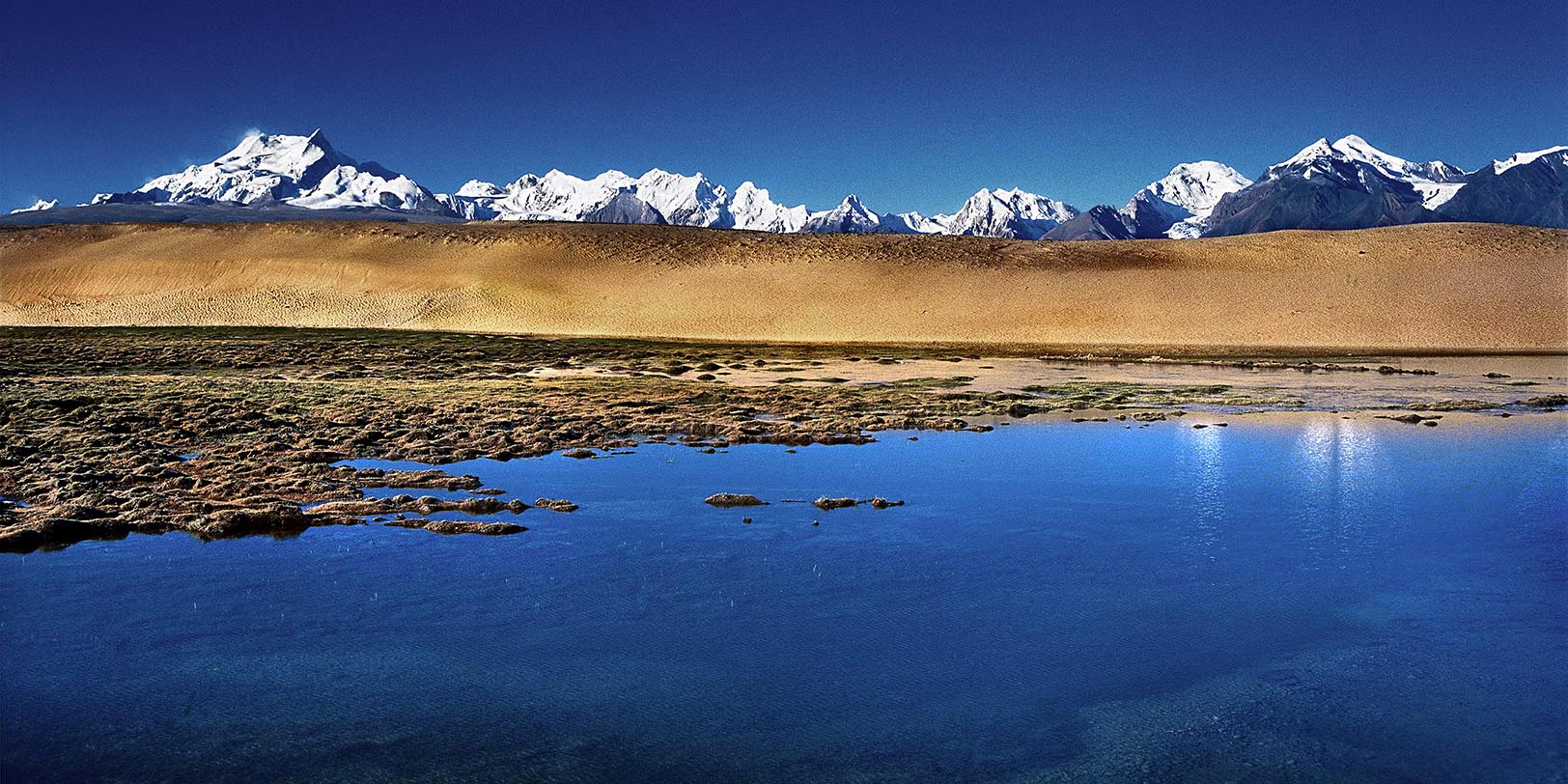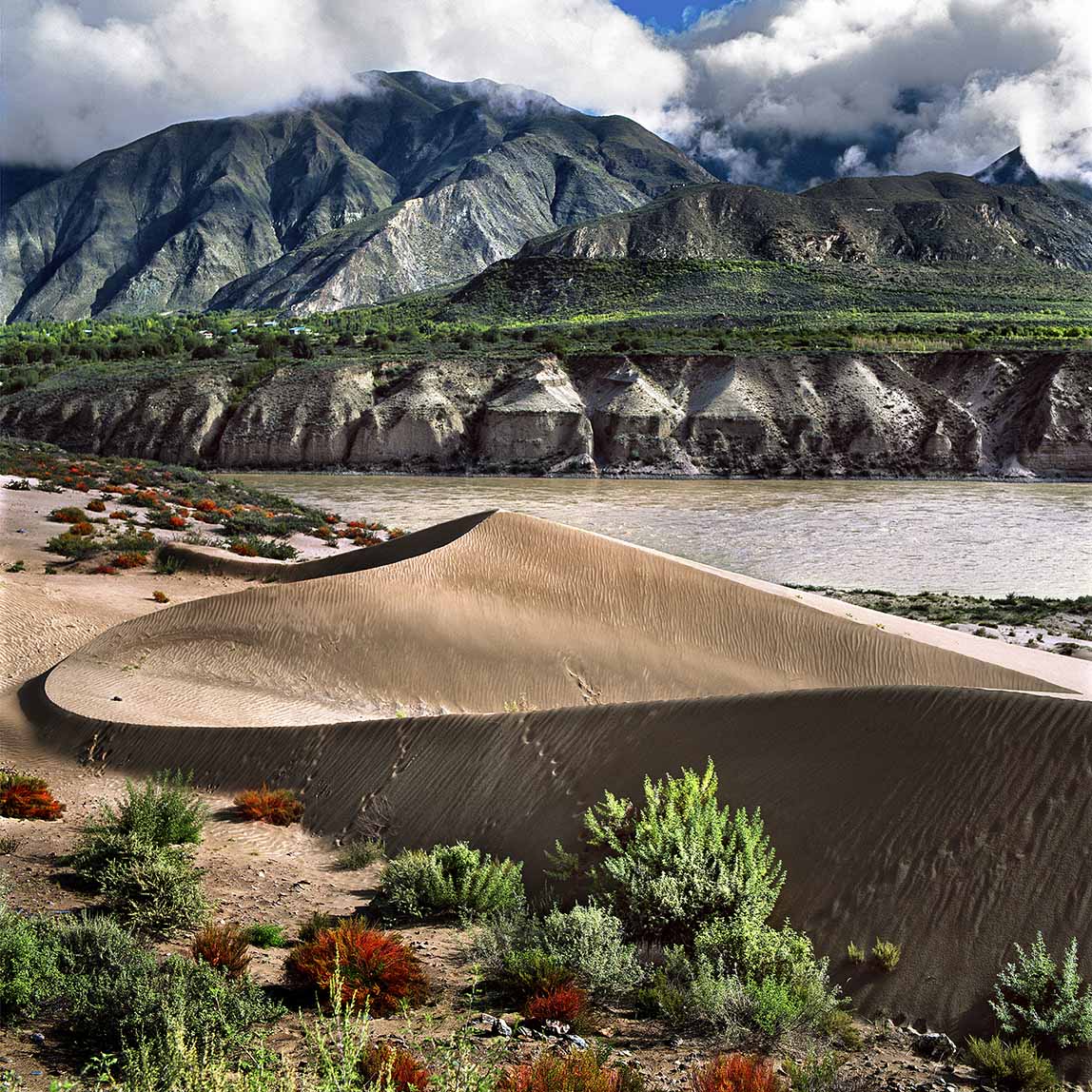A route 'along the water'
Discover the Himalayas in photos.
Discover the Himalayas with a video
5 minutes
of the film made by Serge Verliat
The four approaches
Taking water as a prism reveals how the Himalayan chain acts like a climatic border.
Towards the south, we find a slope which receives the monsoon rains. This is the green slope, the one where water is abundant; it is the slope of generous water.
Towards the north, on the other side of the chain, we find the dry slope, sheltered from the rains “behind” the highest peaks. Here, water is precious.
Looking through the prism of water also reveals the two ways in which men regard this resource.
On the one hand, it is sacred water. Of all the natural elements accessible to humans, it is the most revered. Water is present in all rites, all imaginations and all religions.
Humans’ other attitude is secular and pragmatic. Water is useful for survival, daily needs, and development. But it is also polluted, abused water. Water is at the centre of the greatest challenges faced today.




























